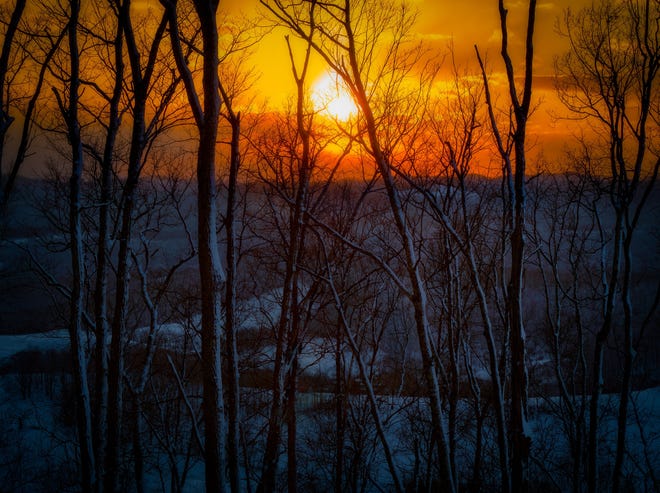What is solar winter and are we in it now? What to know about the darkest time of year
Solar winter is the time of the year with the least amount of daylight in the Northern Hemisphere. It generally lasts from about Nov. 6 to Feb. 3.
 Mary Walrath-Holdridge
Mary Walrath-Holdridge
Bad news for those who enjoy the long, lazy days of summer. We've now officially entered the darkest time of year.
While you've surely noticed the sky turning dark much sooner since the recent end of Daylight Saving Time, sunlight is set to become even more sparse as the Northern Hemisphere enters a time of year known as solar winter.
The waning daylight was made more noticeable by the recent time change, but the days have actually been getting shorter since the summer solstice on June 21. The summer solstice occurs when one of the Earth's poles, in this case the northern one, is titled closest to the sun, causing the longest day and shortest night of the calendar year.
After this, the days begin getting shorter until the winter solstice, the shortest day and longest night of the year, at which point things turn around and start moving once more in the opposite direction.
This year, the winter solstice is set to occur on Dec. 21. Until then, we can expect things to keep getting, well, darker. So how does the solar winter play into all of this?
Daylight saving 2024:When is daylight saving time? Here's when we 'spring forward' in 2024
When does winter start in 2023?When the 2023 winter solstice falls and when winter begins
What is solar winter?

Solar winter is the quarter of the year with the least amount of daylight for the Northern Hemisphere, according to AccuWeather.com. While the dates are approximate and may change slightly from year to year, solar winter generally lasts from about Nov. 6 to Feb. 3.
Solar winter may be the darkest time of year, but that doesn't mean it's the coldest. Thanks to a phenomena called seasonal lag, it takes some time for Earth's land and water to catch up when temperatures begin to change between seasons. Warmer weather from the summer and fall carries over into the early phases of the winter, keeping temperatures higher.
Water has a higher heat capacity than land, meaning it takes more time and significant change in temperature for the waters that make up more than 70% of Earth's surface to cool down or warm up. The slowness of this process means that even if we are experiencing the darkest days of the year, we likely are not experiencing the coldest at the same time.
The daylight saving debate:Unpacking the century-long beef over daylight saving time
What comes after solar winter?

Each year, there are three phases of winter between November and December. While we have dates to dictate the "official" duration of each season, meteorologists and climatologists have a different way of defining the season.
- Solar winter, where we are now, is the period from November to February in which the time between sunrise and sunset is shortest during the calendar year.
- Meteorological winter, as the name implies, has less to do with sunlight and more with weather and temperature. This categorization of winter runs from Dec. 1 through February and coincides with the coldest months of the year.
- Astronomical winter is based on the Earth's position relative to the sun and dictates the "official" start of winter. The calendar dates for the start of winter shift slightly each year based on the Earth's rotation, but this three-month period is dictated by the start of the winter solstice and ends with the spring equinox.
